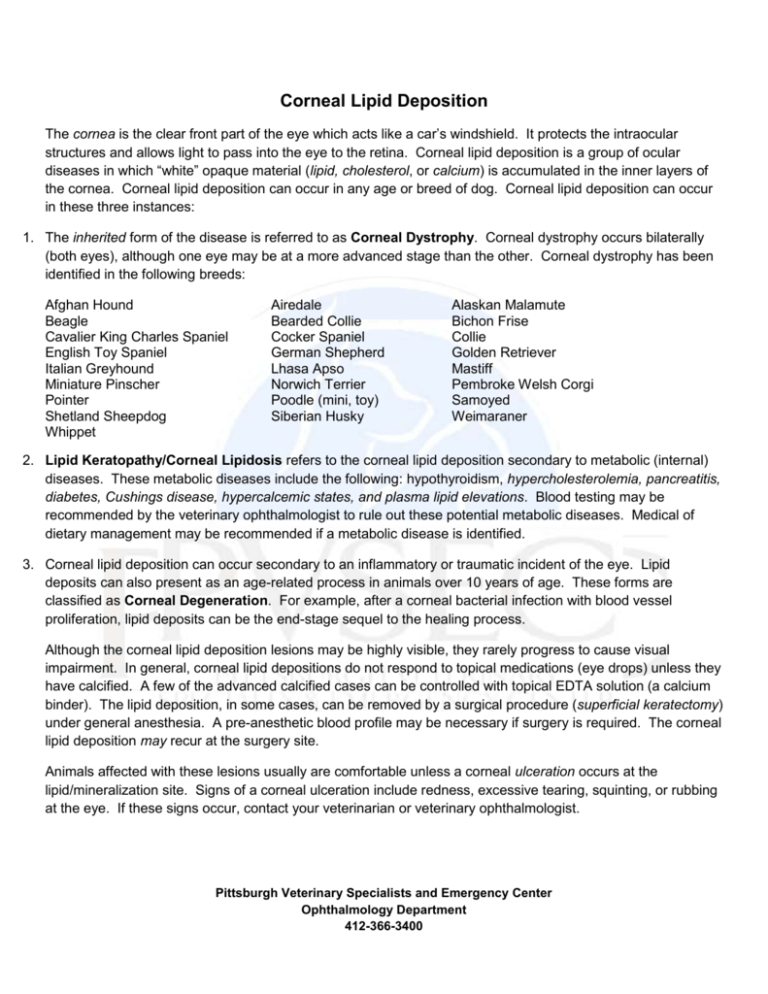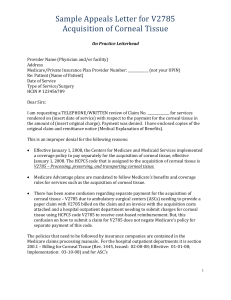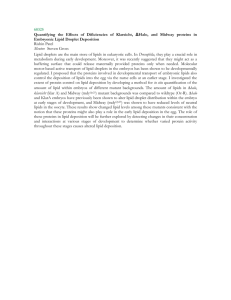Corneal Lipid Deposition - Pittsburgh Veterinary Specialty
advertisement

Corneal Lipid Deposition The cornea is the clear front part of the eye which acts like a car’s windshield. It protects the intraocular structures and allows light to pass into the eye to the retina. Corneal lipid deposition is a group of ocular diseases in which “white” opaque material (lipid, cholesterol, or calcium) is accumulated in the inner layers of the cornea. Corneal lipid deposition can occur in any age or breed of dog. Corneal lipid deposition can occur in these three instances: 1. The inherited form of the disease is referred to as Corneal Dystrophy. Corneal dystrophy occurs bilaterally (both eyes), although one eye may be at a more advanced stage than the other. Corneal dystrophy has been identified in the following breeds: Afghan Hound Beagle Cavalier King Charles Spaniel English Toy Spaniel Italian Greyhound Miniature Pinscher Pointer Shetland Sheepdog Whippet Airedale Bearded Collie Cocker Spaniel German Shepherd Lhasa Apso Norwich Terrier Poodle (mini, toy) Siberian Husky Alaskan Malamute Bichon Frise Collie Golden Retriever Mastiff Pembroke Welsh Corgi Samoyed Weimaraner 2. Lipid Keratopathy/Corneal Lipidosis refers to the corneal lipid deposition secondary to metabolic (internal) diseases. These metabolic diseases include the following: hypothyroidism, hypercholesterolemia, pancreatitis, diabetes, Cushings disease, hypercalcemic states, and plasma lipid elevations. Blood testing may be recommended by the veterinary ophthalmologist to rule out these potential metabolic diseases. Medical of dietary management may be recommended if a metabolic disease is identified. 3. Corneal lipid deposition can occur secondary to an inflammatory or traumatic incident of the eye. Lipid deposits can also present as an age-related process in animals over 10 years of age. These forms are classified as Corneal Degeneration. For example, after a corneal bacterial infection with blood vessel proliferation, lipid deposits can be the end-stage sequel to the healing process. Although the corneal lipid deposition lesions may be highly visible, they rarely progress to cause visual impairment. In general, corneal lipid depositions do not respond to topical medications (eye drops) unless they have calcified. A few of the advanced calcified cases can be controlled with topical EDTA solution (a calcium binder). The lipid deposition, in some cases, can be removed by a surgical procedure (superficial keratectomy) under general anesthesia. A pre-anesthetic blood profile may be necessary if surgery is required. The corneal lipid deposition may recur at the surgery site. Animals affected with these lesions usually are comfortable unless a corneal ulceration occurs at the lipid/mineralization site. Signs of a corneal ulceration include redness, excessive tearing, squinting, or rubbing at the eye. If these signs occur, contact your veterinarian or veterinary ophthalmologist. Pittsburgh Veterinary Specialists and Emergency Center Ophthalmology Department 412-366-3400






